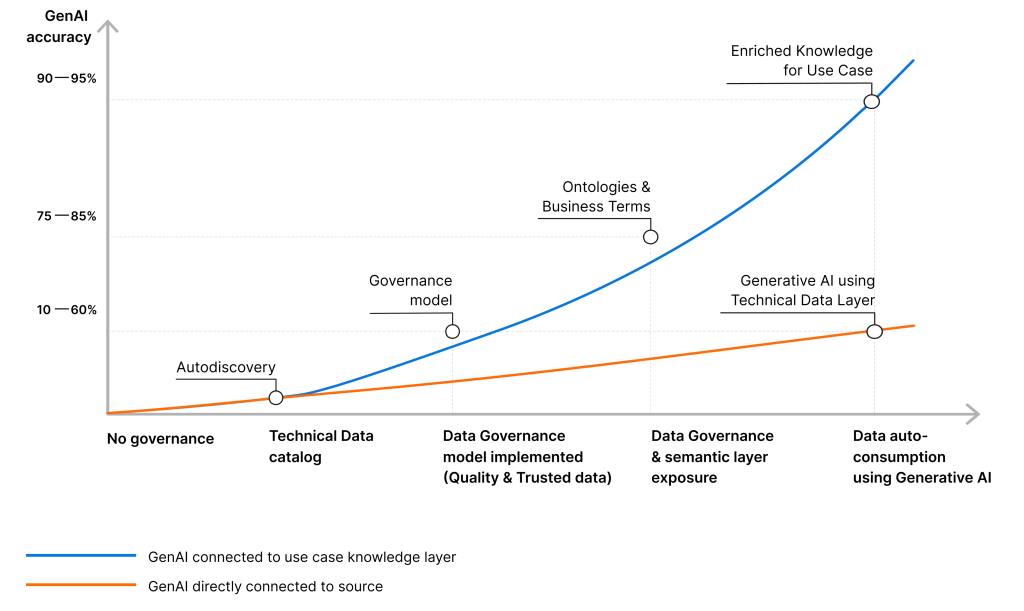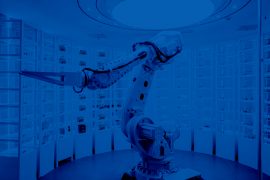As readily-available Large Language Model (LLM) platforms like ChatGPT, Bard AI, Mistral, and Bing AI become more prevalent, business leaders are increasingly exploring the potential of Generative AI (Gen AI) technologies to transform their business operations. For instance, according to one study, 78% of organizations plan to invest in AI platforms over the next 12 months.
However, business owners need reassurance they’re getting the most out of what this tech has to offer. LLMs, while capable of generating masses of human-quality text in milliseconds, may be unable to process technical data properly, giving rise to inaccurate responses (also known as ‘hallucinations’) and erroneous decision-making.
Additionally, many applications and cloud services currently deploying Gen AI-powered copilots or chatbots only work on an individual app level or within specific cloud environments, hindering their ability to deliver company-wide business intelligence insights.
Moreover, effective Gen AI tools need to enforce data governance protocols to ensure that employees can only access information relevant to their roles. Indeed, 88% of organizations are seeking solutions capable of standardizing and unifying Gen AI outputs to safeguard against unauthorized access, and to ensure users can leverage the full extent of their company’s knowledge via a single platform.
In short, Gen AI tools need to incorporate business context and ontologies to help them operate securely and effectively. This is where applying a centralized semantic business layer can help.
This article will explore how centralized semantic data layers enforce data quality and governance standards while enabling seamless data exchange between applications and AI models. We’ll also highlight how Stratio Generative AI Data Fabric empowers organizations to extract the maximum value from enterprise data through efficient semantic business data layer creation and the application of ontologies and knowledge graphs to enterprise datasets. Read on to learn more.
What is a Semantic Data Layer?
A business data layer (BDL) is a centralized platform that provides a unified view of enterprise data from disparate sources. However, traditional BDLs do not explicitly establish the relationships between data sets, limiting the insights that can be extracted for BI purposes.
In contrast, a modern semantic business data layer goes beyond simple enterprise data aggregation. They instead imbibe organizational data with business-specific context — enabling LLMs and Gen AI tools to understand the data it’s working with and generate accurate results (almost) instantaneously.
Two significant components of semantic data layer creation include;
Ontologies: Metadata that defines the properties and relationships between digital assets. Semantic ontologies can be unique to the business or industry-specific (for example, FIBO and MASON).
Knowledge Graph: A visual representation of the semantic network, complete with arrows and lines that show how the data entities are related.
Together, semantic ontologies and knowledge graphs ‘ground’ LLM outputs in reality, by defining what is and is not contained within an organization’s digital environment – preventing false outputs as a result.
Once the LLM (complete with its semantic data layer) is integrated with a BI platform, business users can submit natural language queries. The LLM will then generate a SQL query to retrieve the relevant data, process it, and send it directly to the user — with data governance and security protocols applied.

Why creating a unified Semantic Data Layer is vital
A recent study of CSuite professionals found that 59% of executives believe they lack the resources to meet generative AI expectations. 66% also said they would like more reassurance that their Gen AI investments will achieve ROI.
Enterprise-ready Gen AI solutions (such as MS Copilot and Google Duet AI) automate tasks and generate code, text, and other content forms for business use. However, as mentioned previously, they are cloud and application-centric, which means they rely on cloud infrastructure to function.
This creates a host of challenges for organizations that wish to utilize the latest AI tools to get ahead of their competitors, including:
Security: Gen AI solutions must ensure all enterprise data, regardless of location and format, remains secure through robust data access controls and encryption. Creating a unified BDL with semantic relationships mapped out helps safeguard cloud and on-prem data from falling into the wrong hands.
Compliance: Enforcing data quality standards is essential for compliance. An effective Gen AI solution must adhere to strict governance frameworks and track data lineage throughout the data lifecycle. Effective compliance is possible when all enterprise data is unified in a semantic data layer.
Performance: Market-ready Gen AI solutions are still in development and may not always generate perfectly standardized outputs. Opting for a unified data layer solution enables you to optimize LLM performance over time.
Accuracy: Similar to the challenges in Gen AI performance, the technology is still under development, so accuracy in its output cannot be guaranteed. With a unified semantic BDL, all enterprise data is utilized, providing more reassurance against false answers or AI hallucinations.
Accessibility: Some Gen AI solutions may not be accessible to all system users (including customers). However, with a unified semantic BDL, organizations can democratize data access and even create self-service customer portals that deploy automation to help users complete tasks and generate answers to queries.
Automation: Integrating Gen AI can be challenging without a unified enterprise data layer, hindering an organization’s automation capabilities. With all data discovered, virtualized, and semantic ontologies and knowledge graphs applied, business users can quickly create automated workflows or generate new digital products to increase profitability.
Stratio Generative AI Data Fabric can propel your AI transformation efforts forward
Stratio Generative AI Data Fabric provides a comprehensive solution for businesses utilizing semantic business data layers to spur their AI transformation.
It enables data discovery, virtualization, aggregation, and governance through a single platform, and its user-friendly features ensure that users from all technical backgrounds can generate rapid BI outputs with 90-98% accuracy.
We’re also GDPR, ISO 20022, and DAMA compliant, helping you ensure data governance and security remain paramount. Contact us today.




